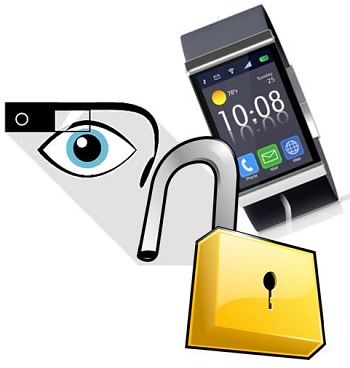A new type of wearables has been designed to assist consumers in protecting themselves against physical attack.
The risk of a physical attack is present in nearly any place and at any time, so a new type of wearable technology has now been developed in order to provide some practical benefit to the wearers and to provide useful advantages in that type of situation.
The new wearables were developed by Kat Alexander, who created the Siren Ring.
Alexander explained that “I was taking a shortcut and a man crossed my path and began to deliberately walk towards me.” Fortunately, she was able to escape the problem, but she did not leave the experience entirely behind herself. She created the Siren Ring, which is a piece of wearable technology that can be twisted in order to activate an alarm that sounds at 110 decibels.
This wearable technology is built to shock a potential attacker and to cause him or her to experience sensory overload.
 According to the owner of Command Excellence, John Sakoian, the shock from the noise of the ring could overload the senses of a potential attacker, which could be very handy in helping to make an escape. The company is provides local safety consulting services. He stated that it is a bright idea to use this wearable tech because it is easily accessible whenever the wearer requires it, even in an emergency.
According to the owner of Command Excellence, John Sakoian, the shock from the noise of the ring could overload the senses of a potential attacker, which could be very handy in helping to make an escape. The company is provides local safety consulting services. He stated that it is a bright idea to use this wearable tech because it is easily accessible whenever the wearer requires it, even in an emergency.
Though the ideal option is to call 911 in the case of an emergency, using a cell phone to reach the police, in the event that an individual is in true danger, taking out a smartphone and making a phone call may not be entirely possible.
The Siren Ring has a special alert button that can be activated through a smartphone app, as well. This mobile app opens up a number of additional features that can be accessed with the thumb. It offers various help features and panic buttons. There is a special wearable technology pod that can be placed on the body that can provide automatic injury detection in the event that a violent crime should occur.
A new report by ABI Research has revealed that wearables are rapidly increasingly in popularity.
The wearable technology market is moving quite quickly throughout 2014, but despite its popularity, the use of these devices could be placing consumers at an ever rising risk of a mobile security breach.
An ABI Research report claims that there will be 485 million shipments of wearables by 2018.
Among the most popular devices in the wearables category includes those that allow for the tracking of health and fitness data. They also often allow this data to be shared with friends, coworkers, or between doctors and patients. However, each new activity that is logged may also be opening up the user to a new mobile security breach risk.
This mobile security speculation by many in the wearables industry has been underscored by Symantec research results.
 On June 7, 2014, that company’s Security Response team looked at the most popular mobile apps at the Apple App Store and examined the most popular iOS compatible offerings within the free “health & fitness” category. It then tested the 100 most popular options within that category. Among them, there were 57 that were also available in the Google Play store so that Android device users would be able to them. Those 57 were also researched on the Android side, by the Symantec team.
On June 7, 2014, that company’s Security Response team looked at the most popular mobile apps at the Apple App Store and examined the most popular iOS compatible offerings within the free “health & fitness” category. It then tested the 100 most popular options within that category. Among them, there were 57 that were also available in the Google Play store so that Android device users would be able to them. Those 57 were also researched on the Android side, by the Symantec team.
What the Security Response team found was that 20 percent of the apps that they examined required a user to use non encrypted (clear) text which exposed their login credentials. This means that in the case of the users of those popular free applications, it could be possible for the device or the app to be compromised.
Furthermore, depending on when and where the wearable device is synced, it could mean that those login credentials will be shared with just about anyone who is paying attention. The typical wearable technology does not connect directly to the internet. Instead, it uses Bluetooth synchronization to an internet enabled smartphone, tablet, or desktop. This process may be making it much easier for cybercriminals to breach mobile security and scoop up personal data from the device user, without ever making him or her aware that it had occurred.
 According to the owner of Command Excellence, John Sakoian, the shock from the noise of the ring could overload the senses of a potential attacker, which could be very handy in helping to make an escape. The company is provides local safety consulting services. He stated that it is a bright idea to use this wearable tech because it is easily accessible whenever the wearer requires it, even in an emergency.
According to the owner of Command Excellence, John Sakoian, the shock from the noise of the ring could overload the senses of a potential attacker, which could be very handy in helping to make an escape. The company is provides local safety consulting services. He stated that it is a bright idea to use this wearable tech because it is easily accessible whenever the wearer requires it, even in an emergency.
 On June 7, 2014, that company’s Security Response team looked at the most popular mobile apps at the Apple App Store and examined the most popular iOS compatible offerings within the free “health & fitness” category. It then tested the 100 most popular options within that category. Among them, there were 57 that were also available in the Google Play store so that Android device users would be able to them. Those 57 were also researched on the Android side, by the Symantec team.
On June 7, 2014, that company’s Security Response team looked at the most popular mobile apps at the Apple App Store and examined the most popular iOS compatible offerings within the free “health & fitness” category. It then tested the 100 most popular options within that category. Among them, there were 57 that were also available in the Google Play store so that Android device users would be able to them. Those 57 were also researched on the Android side, by the Symantec team.